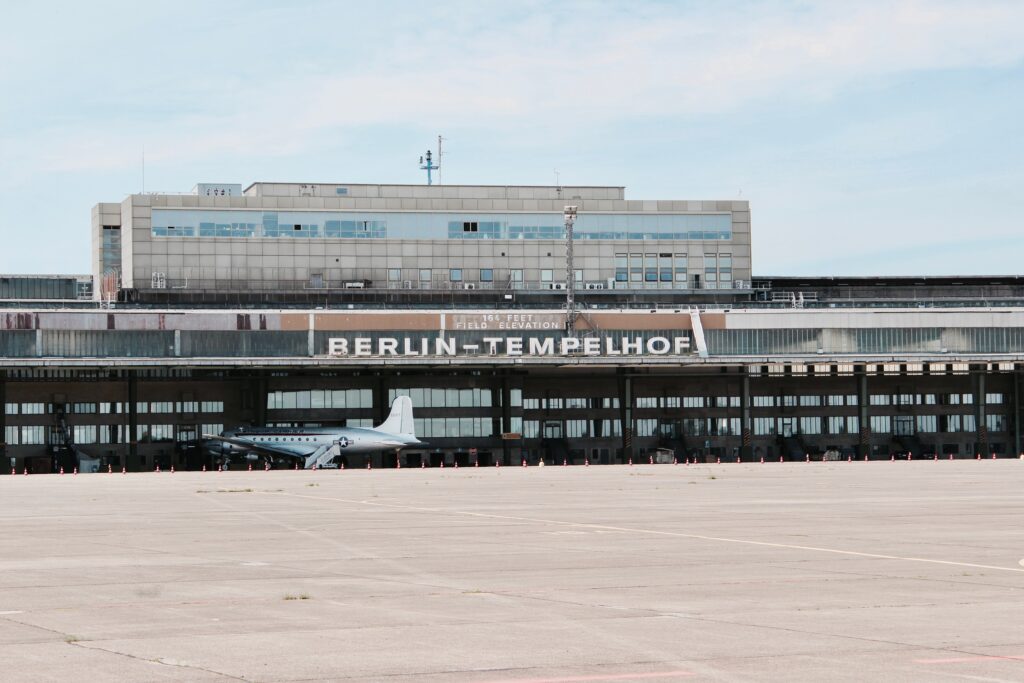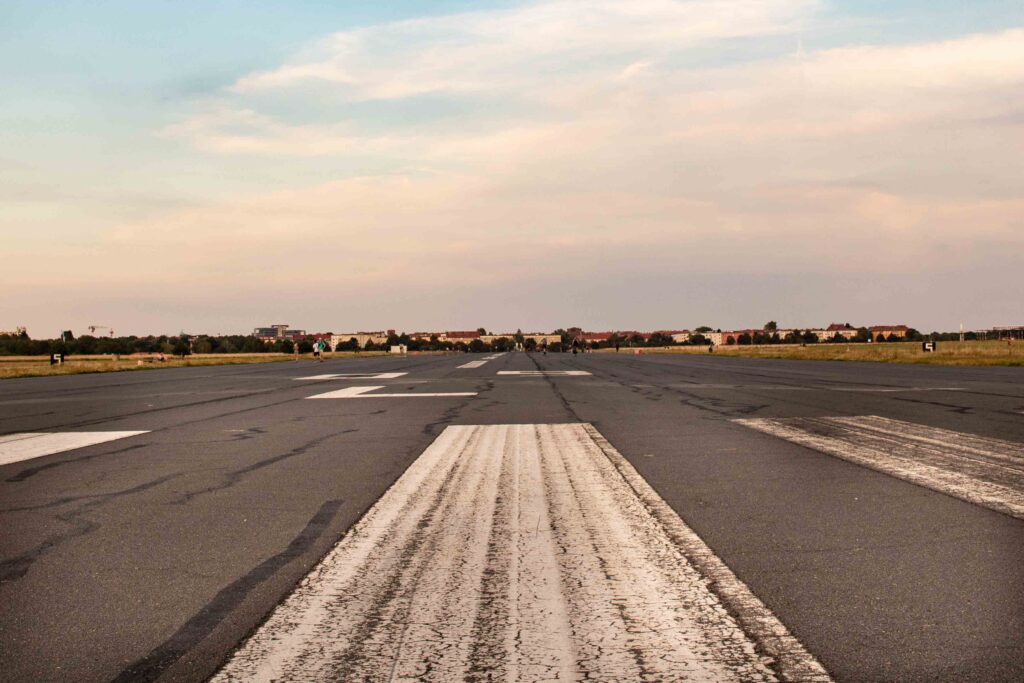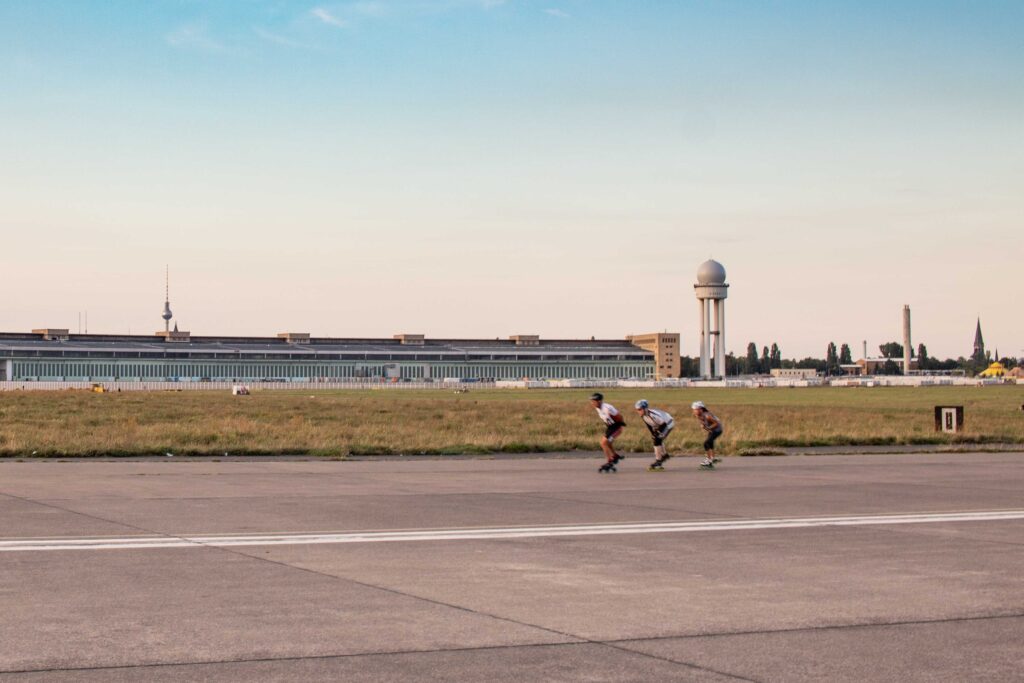5 Reasons Why You Should Visit Tempelhofer Feld When in Berlin
Tempelhofer Feld has made its way into what seems like every Berlin travel guide over recent years, and rightly so. Here are 5 good reasons why you really shouldn’t miss out on a visit to Tempelhofer Feld.
#1 Tempelhofer Feld is a unique location
After the First World War, the Tempelhof Airport was built in Berlin. During its operational years, it played an important role in the history of the German capital. This is because it wasn’t just used as a normal passenger airport, but it was also the main airfield for the Raisin Bombers during the Berlin Airlift from 1948 to 1949. Since at that time the Soviet Union had cut off all supply routes, planes were used to supply West Berlin in the so-called Airlift. During that time, a Raisin Bomber used to land at Tempelhof every 90 seconds. The airport was later used for scheduled services again, until it was eventually closed by the German government in 2008.

Then in 2010, Tempelhofer Feld was opened. The land surrounding the former runways has been freely accessible to all since that time, and offers an enormous amount of space – Tempelhofer Feld is one of the largest inner-city parks in the world – for all sorts of activities. Up until now, 18 projects have been implemented in the 300 hectare-area, with more to follow. Since August 2019, 25 sheep have been grazing in the approximately 23 hectare bird protection area in the south east of Tempelhofer Feld. There’s certainly never a dull moment here.
#2 Urban Gardening is all the rage at Tempelhofer Feld
Urban gardening is a trend which is becoming popular in many buzzing metropolitan areas, and Berlin is no exception, having promoted this movement for years. The Allmende-Kontor project at Tempelhofer Feld is unparalleled. Over 500 gardeners run what is probably the largest intercultural neighbourhood garden in Berlin on a voluntary basis. Flowers, shrubs and all types of herbs are grown in countless raised beds spread over the five thousand metre square area. And it’s all freely accessible to the public, as there are no fences here. It’s all about sharing ideas and learning together. If you’d like to meet the gardeners, the first Saturday afternoon of the month is the best time, because that’s when the many contributors meet and also welcome interested visitors. But you can also take a look around the Allmende Garden every other day, too.

#3 Tempelhofer Feld offers endless space for sports
Whether you prefer rollerblading, skateboarding or cycling, the stretches of asphalt which were once runways at the former Tempelhof Airport are the ideal place to train and roll to your heart’s content. For skateboarders, there’s even a dedicated area known as “Vogelfrei” where half-pipes have been set up. The spacious area is also popular with wind-skaters, because the sheer endlessly flat expanse of the field enables them to harness sufficient wind power. And that’s not all. The land at Tempelhofer Feld can also be used for roll-skiing or cross-skating.

#4 Tempelhofer Feld is the ideal place for a picnic
A 300 hectare wide open space – that officially screams picnic! And there’s even a dedicated area at Tempelhofer Feld which is especially for picnics. You’re even allowed to bring a barbecue along to the picnic and BBQ area.
#5 There’s always something going on at Tempelhofer Feld
A huge green space, urban gardening, diverse sporting opportunities and well-stocked picnic baskets – you could be mistaken for thinking that those are enough reasons to pay a visit to Tempelhofer Feld. But it doesn’t stop there. The gigantic open air space is also a fantastic venue for events. You can attend kite festivals, temporary theater or even acrobatic circus performances here, as well as concerts featuring the hottest bands. Tempelhofer Feld has also hosted music festivals and popular sporting events.
Text and images by Nicole Bittger
Looking for a family hotel in Berlin? Our hotels are located near the city center which gives our guests access to the entire city with ease via excellent public transport connections.


